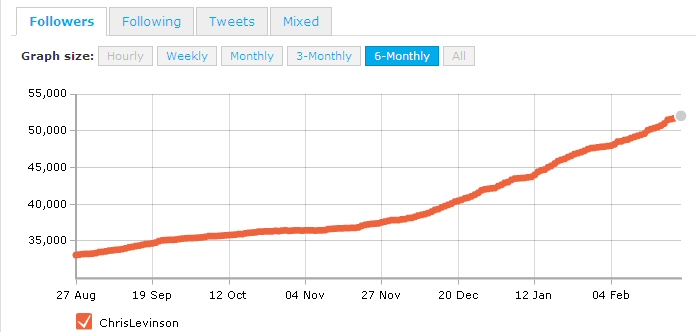Top 8 SEO Mistakes to Avoid in Law Firm Marketing
 SEO (search engine optimization) is an important part of the work that goes into building a website. Just a single mistake could be detrimental to your traffic and rankings; so it’s important to know the do's and don'ts of the basic law firm SEO rules. Success doesn’t come easy in the SEO world; you have to work for it. So here are 8 mistakes you should try to avoid at all costs, to get going in the right direction.
SEO (search engine optimization) is an important part of the work that goes into building a website. Just a single mistake could be detrimental to your traffic and rankings; so it’s important to know the do's and don'ts of the basic law firm SEO rules. Success doesn’t come easy in the SEO world; you have to work for it. So here are 8 mistakes you should try to avoid at all costs, to get going in the right direction.
Leaving Title Tags Empty
One of the most important parts of a website is the title tag, which appears in the header of your website. A title should be short, yet informative; It lets people know what your site is about. Leaving this empty will do vital harm to your website. The title shows up in search engine results and also in the browser tab when people visit. It also comes in handy for when people bookmark your site. Since many people don’t edit before saving bookmarks, not having a title will probably cause them to never return since they will not even remember what your site was about. Would you click on a website that appears as “no title” in search results?
Lack of Keywords in Content
How are people supposed to find your content if you aren’t including the right keywords? A lack of targeted keywords within your content of course leads to a lack of traffic. While you don’t want your keyword density to be too high, you don’t want it too low either. A rule of thumb is to stick to a density of 4% - 5% or 1 keyword mention for every 100 words of your content. Also be sure to spread the keyword throughout your content. A quick search for “keyword density checker” can get you a tool that will do the calculations for you. Also make sure that the keywords you’re using are relevant.
Keyword Spamming and Stuffing
While this is a huge unethical SEO no-no, you still find many people doing it. Keyword stuffing is achieved by overloading your meta tags or content with repetitive or irrelevant keywords. Many try to cheat the system by adding high traffic keywords to their website or content, but if they’re irrelevant to you then they’re doing more harm than good. Using repetitive keywords is even worse. While you may not reap the repercussions at first, all search engines do frown on this and you will eventually be seriously penalized. It’s not good to try and trick the search engines or your visitors.
Not Using Internal Linking
Links to your website from your website are just as important as links from other relevant websites. It’s also a good method for keeping people on your website a little longer. Doing some deep linking, also known as internal linking, can really give you a SEO boost by building the relevancy of your pages. You do this by picking a few keywords within your content and then linking them to other pages on your website. Even WordPress now has a feature that lets you link to existing content on your site when adding hyperlinks. It’s also a good idea to check for broken links every once in awhile so that you’re not linking dead ends (another no-no). There are many tools available to check for broken links for you.
No Use of Headers
Headers another important part of your website, especially your content. Search engines give precedence to headers over your regular text; they should be able to know what your website is all about just from looking at your headers. These are great for giving structure to your content and should be informative so that readers can quickly jump to different sections. It’s also a good idea to use targeted keywords within your H2 and H3 headers since they are important in increasing your sites rankings. Remember, the bigger the header, the more important it is.
Missing Alt Tags in Images
If for some reason your images do not load on your website, whatever text is in the alt tag will be displayed instead. So it’s always important to include these on your images so that people will have a general idea of what the image was about (if it fails to load). Alt tags are also important for visually impaired users who use reader programs to speak website pages out loud to them. Readers cannot read images, but they can read alt tags.
Using Flash For Your Website
This is one that you probably see all the time, but it cannot be stressed enough. Using flash to build an entire website is bad. Sure they’re nice to look at and impressive, but because of their structure they cannot be optimized. With a flash website, a search engine cannot crawl your site to find out anything about it because it is all in a single .swf file. There are also many mobile devices that cannot load flash websites. With the growing popularity of smartphones and tablets, you want to be sure that people will be able to view your website no matter what device they’re using.
Improper Use of Internal Anchor Text
Anchor text is the visible text of a hyperlink. You’ll see that many sites will use “click here” or “this link” as anchors, but vague text like this is bad for your website health. When a search engine finds a link on your website, it needs to understand what the hyperlink is about in order to rank its importance. The only way to know what the hyperlink is about is by the anchor text that it’s attached to.
Now that you have these basic rules to keep in mind, you’re one step closer to SEO success and favor with search engines. Just don’t expect to see instant results overnight; it will take time, hard work and dedication.
 Thanks to our friends at
Thanks to our friends at  I just attended a useful
I just attended a useful 


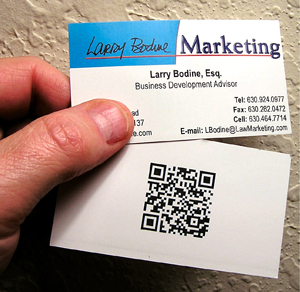 Here's a nifty law firm marketing technique: I just got 100 business cards with my custom QR code on the back from Office Max for $30. If you're going to the LMA conference, you can give the cards to your colleagues, who can read the code with their smart phones.
Here's a nifty law firm marketing technique: I just got 100 business cards with my custom QR code on the back from Office Max for $30. If you're going to the LMA conference, you can give the cards to your colleagues, who can read the code with their smart phones.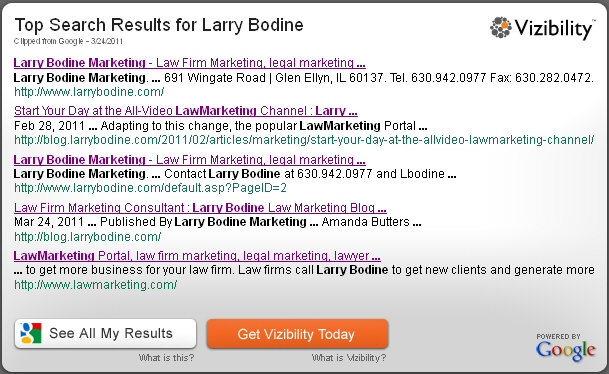

 The Legal Services Act (LSA) came into force in 2007 and has been dubbed as the 'Big Bang' for the legal profession. Previously a profession known for being resistant to change, the legal profession is now one in transition, according to Amanda Butters, an account manager at
The Legal Services Act (LSA) came into force in 2007 and has been dubbed as the 'Big Bang' for the legal profession. Previously a profession known for being resistant to change, the legal profession is now one in transition, according to Amanda Butters, an account manager at 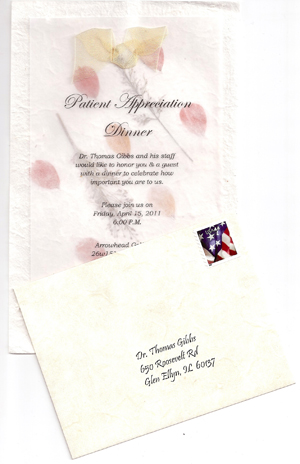 I don't know about you, but I love my dentist. My wife and I have been seeing
I don't know about you, but I love my dentist. My wife and I have been seeing .jpg) See the new video, 4 minutes on YouTube:
See the new video, 4 minutes on YouTube: They are dead yet they walk among us. Among the undead are ideas and mindless marketing rituals including rebranding, advertising, sponsorships, golf days and brochures, according to marketer
They are dead yet they walk among us. Among the undead are ideas and mindless marketing rituals including rebranding, advertising, sponsorships, golf days and brochures, according to marketer  A tip of the hat to
A tip of the hat to  I found this great post on the
I found this great post on the  Donna Erickson
Donna Erickson "Lawyers will leverage the power of technology to create and foster relationships that will enhance their practices," said
"Lawyers will leverage the power of technology to create and foster relationships that will enhance their practices," said 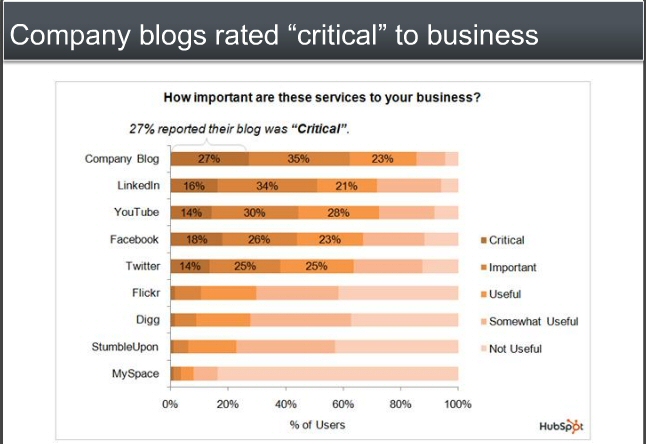 HubSpot found that Blogs are still great marketing investments. Every post you publish is a long-term asset and is helping build brand and awareness. Blogs and social media really do generate clients. The more often you blog, the more likely you are to acquire clients. There is a big drop-off in client acquisition if blog monthly or less often.
HubSpot found that Blogs are still great marketing investments. Every post you publish is a long-term asset and is helping build brand and awareness. Blogs and social media really do generate clients. The more often you blog, the more likely you are to acquire clients. There is a big drop-off in client acquisition if blog monthly or less often. If you’re not blogging, you’re in the minority: 65% of businesses have a blog. 27% of respondents said the company blog was “critical” to business – the highest percentage ever. To a lesser degree, Linkedin, YouTube and Facebook and twitter were found “critical.” Flickr, Digg, StumbleUpon and MySpace were considered “not useful.”
If you’re not blogging, you’re in the minority: 65% of businesses have a blog. 27% of respondents said the company blog was “critical” to business – the highest percentage ever. To a lesser degree, Linkedin, YouTube and Facebook and twitter were found “critical.” Flickr, Digg, StumbleUpon and MySpace were considered “not useful.”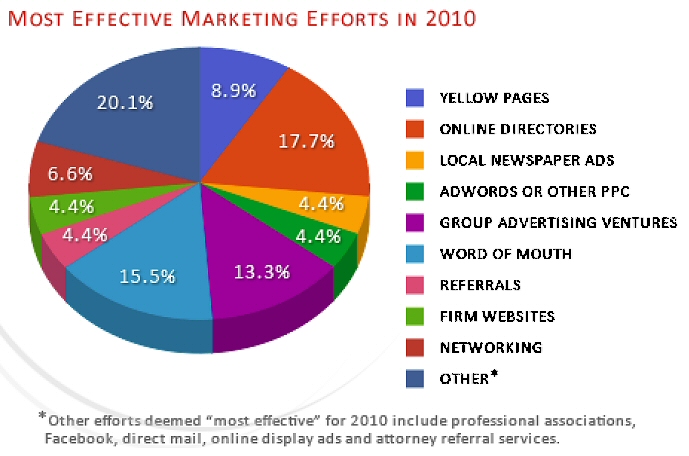 Many attorneys also reported taking advantage of free or low-cost opportunities to promote their law firms. Some of the most popular efforts included local networking (50%), online networking (34.7%), social media (36.9%), speaking engagements (34.7%), asking departing clients for referrals (45.6%), blogging (32.6%), publications relevant to client base (21.7%) and free events (21.7%), according to the report.
Many attorneys also reported taking advantage of free or low-cost opportunities to promote their law firms. Some of the most popular efforts included local networking (50%), online networking (34.7%), social media (36.9%), speaking engagements (34.7%), asking departing clients for referrals (45.6%), blogging (32.6%), publications relevant to client base (21.7%) and free events (21.7%), according to the report..jpg) Based on the calls I get from law firm marketing professionals, the ability to train lawyers in business development is a important skill. The partners are demanding it. With this in mind I'm sharing my own plans for attending the greatest educational conference coming soon -
Based on the calls I get from law firm marketing professionals, the ability to train lawyers in business development is a important skill. The partners are demanding it. With this in mind I'm sharing my own plans for attending the greatest educational conference coming soon -  I had no doubt something special was going on at K&L Gates when Chief Marketing Officer Jeff Berardi was named Marketing Professional of the Year by Hubbard One in their “Excellence in Legal Marketing” Awards.
I had no doubt something special was going on at K&L Gates when Chief Marketing Officer Jeff Berardi was named Marketing Professional of the Year by Hubbard One in their “Excellence in Legal Marketing” Awards. By following these simple directions, you can create your own studio for less than $1,500. It helps if you have a do-it-yourself attitude and a thrifty for approach to life. Here's how I did it.
By following these simple directions, you can create your own studio for less than $1,500. It helps if you have a do-it-yourself attitude and a thrifty for approach to life. Here's how I did it.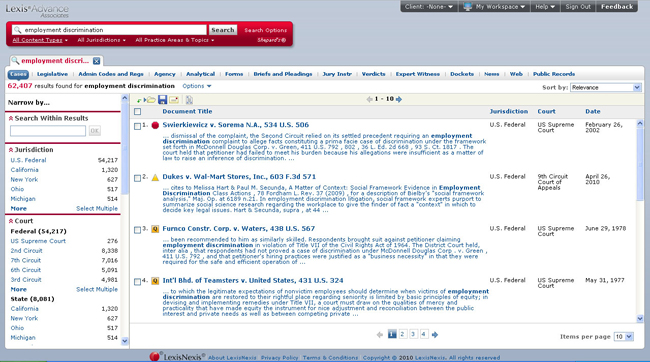
 This excerpt is from
This excerpt is from 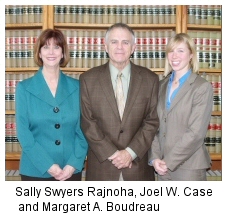 You'll recall that a three-lawyer St. Louis firm won the
You'll recall that a three-lawyer St. Louis firm won the 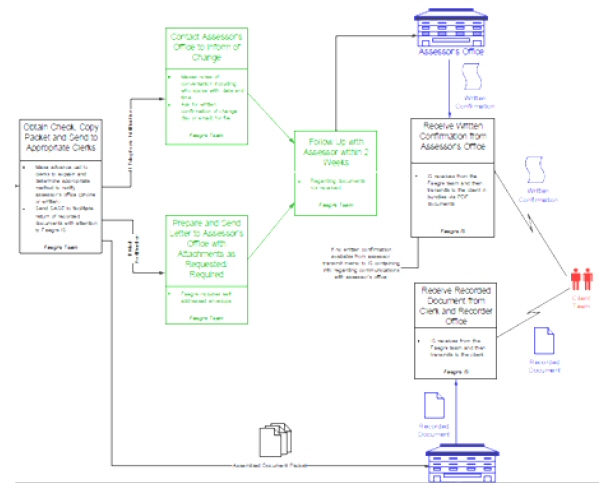
 "We took a lean approach, to extract waste from any point of the process," said Steven Petrie, Director of Practice Operations and Strategy for Faegre. "This gave us a solid foundation in efficient execution and was an important differentiator. We went through the process map which spread across an entire table and the client was impressed."
"We took a lean approach, to extract waste from any point of the process," said Steven Petrie, Director of Practice Operations and Strategy for Faegre. "This gave us a solid foundation in efficient execution and was an important differentiator. We went through the process map which spread across an entire table and the client was impressed."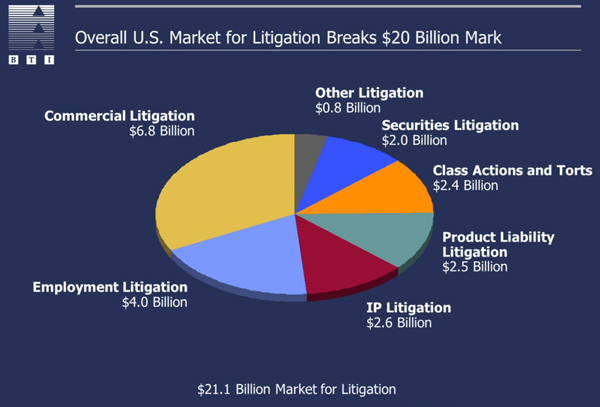
 Actually,
Actually, 